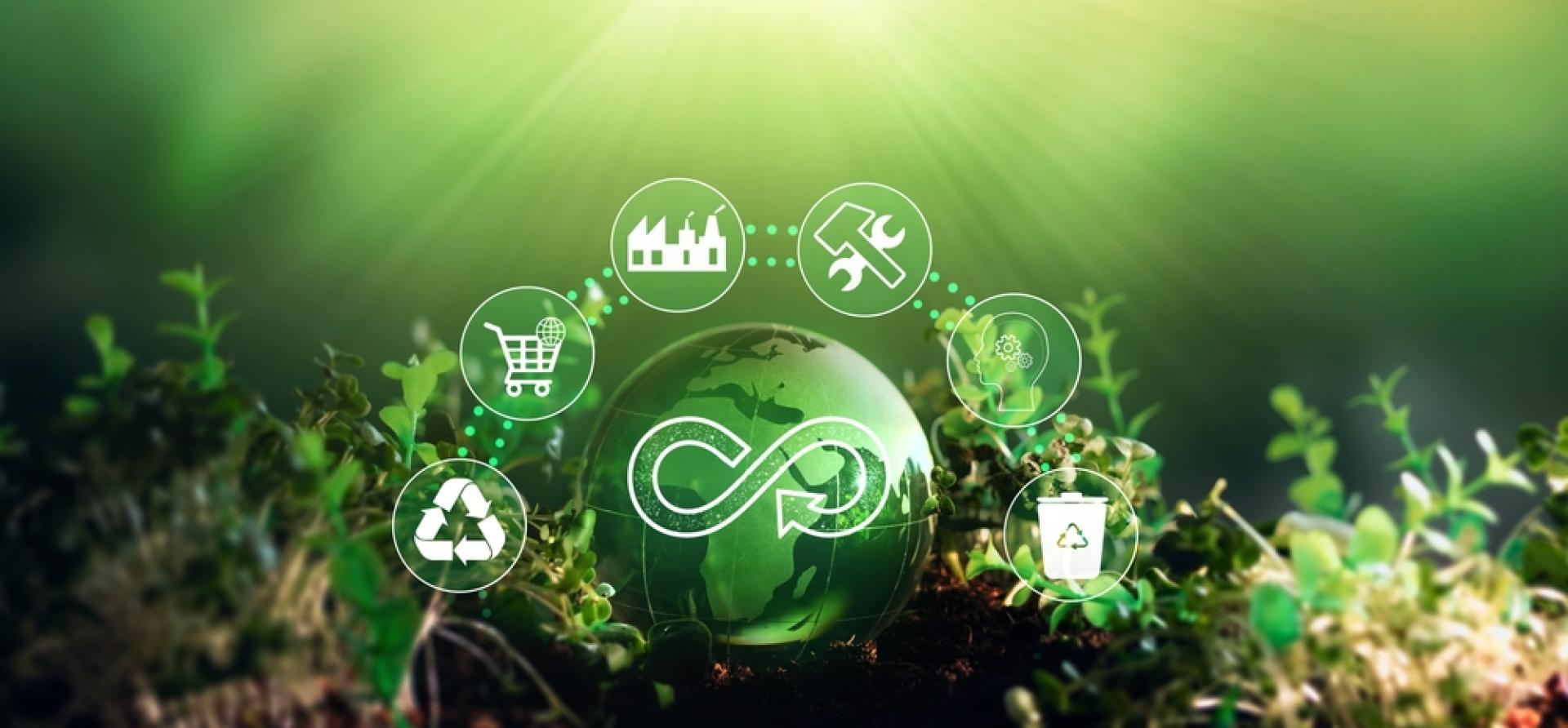Role of recycling for resilient solar photovoltaic supply chains

Key Findings
Recycled secondary minerals, when put back in the solar photovoltaic (PV) supply chain, can reduce the need for mining new primary minerals.
Most PV waste consists of a mix of recyclable raw materials, and many nations are currently putting the necessary infrastructure and regulations in place to meet future recycling demands.
A large amount of global finance is focused on mining primary minerals and setting up new manufacturing units. A percentage of this capital should be shifted to developing and scaling recycling technologies globally.
As the world decarbonises, the shift towards clean energy highlights new energy security dependencies, the risks associated with the adoption of new and emerging technologies, supply chain vulnerabilities and sustainability challenges related to raw material extraction and export. The increasing demand for clean energy technologies, including solar panels, batteries and electric vehicles, has brought global focus on the availability of critical raw materials (CRMs).
CRMs refer to the raw materials and rare earth metals required for the manufacturing of clean energy technologies. Depending on the type of solar panel – crystalline, thin films or cadmium telluride (CdTe) – solar photovoltaic (PV) manufacturers require CRMs like silica, silver, tellurium, selenium, copper, cadmium, indium, and more. Aluminium is the most used metal in solar PV manufacturing as it provides structural support to the panels, although various countries still debate whether it should be on the critical raw material list or not.
The demand for CRMs for solar PV manufacturing can be met either by mining and processing primary minerals or by recycling solar PV waste for secondary minerals. These recycled secondary minerals, when put back in the solar PV supply chain, can reduce the need for mining new primary minerals.
Solar PV waste comprises panels that have either reached the end of their life cycle or are destroyed during production, transportation, testing, installations and climate disasters. At present, this waste ends up in landfills.
The International Renewable Energy Agency (IRENA) estimates that 78 million tonnes of solar PV waste will be accumulated by 2050. The amount of PV waste in India is estimated to grow to 200,000 tonnes by 2030 and to around 1.8 million tonnes by 2050. Imagine the quantum of CRMs that can be extracted from this waste. These estimates may increase as India moves towards its clean energy target of 450 gigawatts (GW) of renewable energy by 2030.
In addition, the government included solar PV manufacturing in its production-linked incentive scheme (PLI) scheme, with a total outlay of approximately Rs240 billion (US$3.2 billion) spread over two tranches. This has helped PV manufacturers grow their domestic cell and module capacity. Yet, dependency on imports for CRMs is still a challenge.
The good news is that most PV waste consists of a mix of recyclable raw materials, and many nations are currently putting the necessary infrastructure and regulations in place to meet future recycling demands.
Changing the Global Regulatory Outlook
Realising the growing demand for CRMs and the existing dependency on a few countries, many economies have introduced a dual approach to regulation. One, to track, capture and boost existing critical minerals supply and production and two, to promote circular approaches like reuse and recycling.
The US Inflation Reduction Act (IRA) is a classic example of how to strengthen supply chains for everything from critical minerals to efficient electric appliances. The EU Critical Minerals Act highlights the need for companies to take responsibility for developing risk mitigation strategies, resilient and transparent supply chains, along with longer inventories of CRMs.
Several circular regulations have already been put in place, such as the Solar Incentives Job Bill 5939 in Washington State, which requires PV manufacturers to provide a takeback and recycle programme for PV modules. The EU’s Waste from Electrical and Electronic Equipment (WEEE) directive mandates EU member states to recycle 85% of the materials used in solar panels, based on the Extended Producer Responsibility (EPR) principles. The EU Sustainable Batteries Regulation lays out the requirements for sustainable production, deployment and waste management of batteries. The EU Battery Passport is another great piece of legislation aimed at controlling the entire battery life cycle, from production to recycling. Recently, India also extended its EPR regulations from e-waste to solar panels.
Missing Pieces to Accelerate Circularity
Even though the broader pathways and regulations are in place, several areas of implementation, standards, technology and finance still need clarity and work.
Supply chain transparency: There is limited or no tracking of data on CRM mining, processing and usage. Similarly, the lack of a proper registration mechanism for solar panel components that are imported and exported adds to the issue of supply chain transparency.
Collection and transportation: Tracking down and collecting the damaged and end-of-life solar panels presents the toughest obstacle. Producer responsibility organisations (PROs) are required by the EPR regulation to gather and transport waste to the proper recyclers; however, it is still unclear who is accountable for the costs and what proportion of the costs would go to each stakeholder (PRO, recyclers and manufacturers).
Value-based targets, not weight: The WEEE directive sets recycling and collection targets based on the weight of material (85%) for solar panels. A close look at the composition of a solar panel shows that 80-85% of the weight is glass, aluminium frame, cables and junction box. Removal of these through mechanical dismantling is enough to meet the WEEE directive of 85% by weight. However, there is no incentive remaining for recyclers to undertake high-value recycling to recover CRMs like silica and silver, which are crucial for achieving circularity. One potential solution is to set recycling targets based on the value of the material and not just its weight. Taking inspiration from the EU Battery Passport, solar PV and battery manufacturers can also be mandated to use a pre-defined percentage of secondary minerals while manufacturing. This will also ease the pressure on the mining and processing of primary minerals.
Absence of testing standards and labelling for recycled minerals: Another big challenge is having no structure for testing the quality of the recycled minerals. This is crucial if the recycled minerals are put back into the manufacturing value chain. In addition, a framework to regulate secondary markets for the resale and reuse of solar panels is also missing.
Financing circularity: A large amount of global finance is focused on mining primary minerals and setting up new manufacturing units. A percentage of this capital should be shifted to developing and scaling recycling technologies globally. This will also help reduce carbon emissions, for example, recycled aluminium emits up to 95% less carbon dioxide than virgin sources. Efforts will also be needed to support research and development of new low-carbon and circular materials.
Leading technology start-ups: Despite the existing challenges, several global players have taken the lead in developing recycling technologies and businesses. SOLARCYCLE, a California-based start-up, recently raised Rs2.4 billion (US$30 million) to scale their recycling technology. Germany’s Solar Materials is the first recycling company in the world to recover all raw materials from solar modules in an economical and energy-efficient way. The company recently closed a Rs2.2 billion (EUR2.5 million) seed financing round from bmp Ventures, Katapult and First Imagine! to build a recycling line with a capacity of 3,000 tonnes per year. Another German recycling company, FLAXRES, has developed mobile plants to recycle solar panels. ROSI is a French company offering innovative solutions for recycling raw materials in the PV industry. Other players operating in the value chain of the global solar panel recycling market are Rinovasol Group, First Solar, Reiling GmbH & Co. KG, SunPower Corporation and Trina Solar.
To move towards being a circular industry, the solar energy sector will need to examine its own processes, supply chain, manufacturing and recycling. Recycling can help decrease the quantity of primary resource mining, but it can never completely replace it. It will be critical to conduct an analysis to determine what proportion of the CRMs used for solar PV manufacturing can be replaced by recycled secondary minerals. Multinational partnerships, technology exchange and international collaborations will play a huge role in scaling and mainstreaming circular solar PV supply chains.
This article was first published by Renewable Watch.















